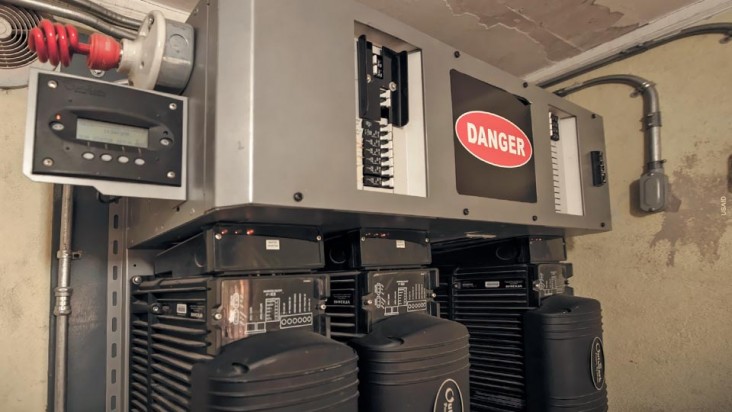Batteries and Battery Management
Batteries provide backup power during gaps in electricity generation. They are critical for some energy systems but are expensive and may require maintenance or replacement. Learn more
You are viewing:
Information released online before January, 2021.
Note: Content in this archive site is NOT UPDATED, and external links may not function. External links to other Internet sites should not be construed as an endorsement of the views contained therein.
You are entering the 2017-2020 Archive for the
United States Agency for International Development web site.
If you are looking for current information, visit www.usaid.gov.

Solar energy systems that power health clinics include multiple components that health clinic operators need to understand.
Energy systems are composed of multiple components that act in concert. The act of designing an energy system is largely sizing the different components, such as the batteries and photovoltaic (PV) arrays, in relation to each other. PV systems are a renewable energy generation technology; other renewable technologies include wind, micro-hydro, biogas, and biomass gasification. For wind and solar power, battery storage is critical to meeting health-care facility demand when generation drops. Batteries can also be useful for biogas, biomass, or diesel generator–based energy systems by increasing generator loading and efficiency and enabling generator shutdown when loads and generator efficiency are low.
Remote monitoring is a critical function that requires specialized data-logging and communication hardware that a designer has to appropriately specify for an energy system. If health-care facility owners want to assess energy system performance and evaluate the suitability of the energy system’s design, they must understand the capabilities and limitations of remote monitoring.
An uninterruptible power supply (UPS) is a commercial product that couples a battery system with critical loads to bridge intermittent grid power. It uses grid power to simultaneously power loads and charge built-in batteries, and if grid power drops, the UPS seamlessly switches the loads to battery power. While the main component of a UPS is a battery bank, the UPS serves more functions than the battery banks used in a solar or wind system. For on-grid health-care facilities, it is worthwhile to understand the capabilities of UPS systems to evaluate if they are an economic alternative to backup generator sets.
Batteries provide backup power during gaps in electricity generation. They are critical for some energy systems but are expensive and may require maintenance or replacement. Learn more
PV systems generate electricity from sunlight collected by solar panels. This energy can be used directly or stored in batteries. Learn more
Remote monitoring of health facility power installations increases the speed, effectiveness, and value of maintenance activities. Learn more
Uninterruptible power supplies provide backup power, protecting equipment from damage in the event of grid power failure. Learn more
Comment
Make a general inquiry or suggest an improvement.